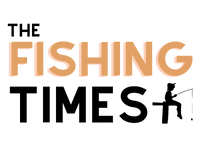Have you ever spent hours on a boat without even a single nibble, questioning where all the fish are hiding? You’re not alone! Many anglers find themselves in the same boat, quite literally. Here’s a surprising fact: more than 75% of anglers aren’t using their fish finders to their full potential. Understanding how to read a fish finder like a pro isn’t just for the tech-savvy; it’s a game-changer for anyone wanting to reel in the biggest catch. This blog will guide you through the nuances of fish finders, helping you master this powerful tool, improve your fishing success, and transform your outdoor experiences.
How Do You Read a Fish Finder Like a Pro?
Understanding “How to Read a Fish Finder Like a Pro” involves using a device that shows what’s beneath your boat, identifying fish, water depth, and underwater structures. Originating from sonar technology, fish finders have revolutionised fishing by giving anglers a clearer picture of the underwater world. Knowing how to interpret a fish finder improves your chances of success, helping you locate fish more effectively and choose the best spots to cast your line. As technology has advanced, these tools have become more user-friendly, making them an essential part of the angler’s toolkit. They enhance the fishing experience by transforming guesswork into informed decisions, leading to more enjoyable and productive outings.Mastering Fish Finders Elevates Your Fishing Skills
Alrighty folks, let’s dive straight into the wonders of mastering a fish finder. First off, if you want to elevate your fishing prowess, knowing how to read a fish finder can make a massive difference. Imagine being able to spot the perfect fishing spot in no time. That’s like having a superpower, wouldn’t you agree? This advanced knowledge also supports crucial conservation efforts by reducing unnecessary disturbance to aquatic habitats. Understanding exactly where fish groups are hanging out means you’re avoiding those less populated areas, lending Mother Nature a hand in preserving her natural areas.
- Pinpointing fish locations with precision ensures you spend more time reeling in catches rather than guessing. It optimises your entire fishing trip.
- Fish finders can alert you to changes under the water’s surface, which helps you adapt and evolve your techniques, building your skillset further.
- A key aspect of fishing is safety—by understanding the lay of the land, fish finders can make you aware of submerged objects like rocks or sunken trees, keeping your equipment (and you!) safe.
- When you catch only what’s needed and leave the rest for other anglers and future generations, you’re playing a part in sustainable fishing.
So, knowing your way around a fish finder not only ramps up your fishing adventures but plays a role in supporting a broader, sustainable fishing lifestyle.
Mastering Fish Finder Reading: Easy Steps for Expert Anglers
- Start by familiarizing yourself with your fish finder. Take the time to read the manual and understand the functions of each button and feature. It’s common for anglers to skip this step, but doing so could leave you stumped in the middle of your fishing trip. Trust me, you’ll thank yourself later!
- Position the transducer correctly. Often misunderstood, the transducer must be in contact with the water so it can accurately send and receive signals. A common mistake is mounting it too high, resulting in inaccurate readings. Make sure it’s placed below the waterline for clearer results.
- Practice interpreting the screen. Not every blip is a fish! Learn to differentiate between fish, plants, and other structures. Many beginners assume every mark is their next catch, but they’re not. Use your manual’s display guide to practice accuracy.
- Regular calibration is key. Don’t forget to adjust your fish finder’s sensitivity based on the water conditions. High sensitivity may give false readings in turbid water. Adjust it as needed to ensure you’re not fishing in a rainforest of “phantom” fish!
Top Tools for Mastering Your Fish Finder
| Tool | Functionality | Skill Level | Price Range | Recommendation |
|---|---|---|---|---|
| Basic Fish Finder | Identifies fish and underwater structures | Beginner | £50-£100 | Good starting point for newcomers |
| Mid-Range Fish Finder | Provides depth readings and fish identification | Intermediate | £100-£300 | Best balance between functionality and price |
| High-End Fish Finder | Advanced sonar technology and clear displays | Advanced | £300+ | Exceptional for pros looking for detailed readings |
| Portable Fish Finder | Handheld and versatile for various environments | All Levels | £60-£150 | Convenient for anglers on the go |
| Standout Tool | Chartplotter Fish Finder Combo | All Levels | £250-£500 | Combines mapping and fish finding; perfect for thorough exploration |
Mastering Fish Finders: Real-Life Success Stories
Last summer, I had the chance to fish with my friend Dave, who’s a whiz at using fish finders. Before this trip, I’d never even touched one of these gizmos, but Dave was keen to teach me. We set off early morning on his boat, fish finder in tow. As the fog lifted, Dave demonstrated how to interpret the screen: identifying different structures and discerning fish signals from background noise. It was like being handed a map for an underwater treasure hunt! With his guidance, I learnt to differentiate between a large school of bait fish and a couple of larger fish lurking below. Later that day, thanks to the newfound skill of reading sonar signals, I caught my biggest pike to date. It wasn’t just luck—it felt like I had tapped into a secret realm beneath the water. What I discovered was invaluable: with practice, a fish finder can significantly boost your catch rate and add a whole new dimension to the fishing experience. It was an eye-opener, and now, I can’t imagine a fishing trip without it.Fish Finder Usage: Enhance Conservation and Environmental Awareness
- Using a fish finder responsibly plays a crucial role in sustainable fishing. By accurately detecting fish, you can target specific species, reducing bycatch and helping maintain the natural balance in aquatic ecosystems.
- Set your fish finder to avoid areas heavily populated with vulnerable species or those during spawning seasons. This ensures these fish can reproduce and contribute to the ecosystem’s health.
- Practice catch and release with minimal harm. Using the fish finder effectively means you can plan when and where to release fish for optimal survival, giving them a better chance to thrive.
- Limit your fishing to healthier populations identified by your fish finder. This prevents overfishing in areas where fish numbers may already be low, supporting ecosystem sustainability.
- Respect local regulations on fishing quotas and areas restricted for fishing. Use your fish finder to gain insights into legal fishing zones, balancing your catch with environmental considerations.
- Remember to share your knowledge about sustainable fishing practices with others, promoting aware angling communities that benefit not just the present water life but future generations too.







